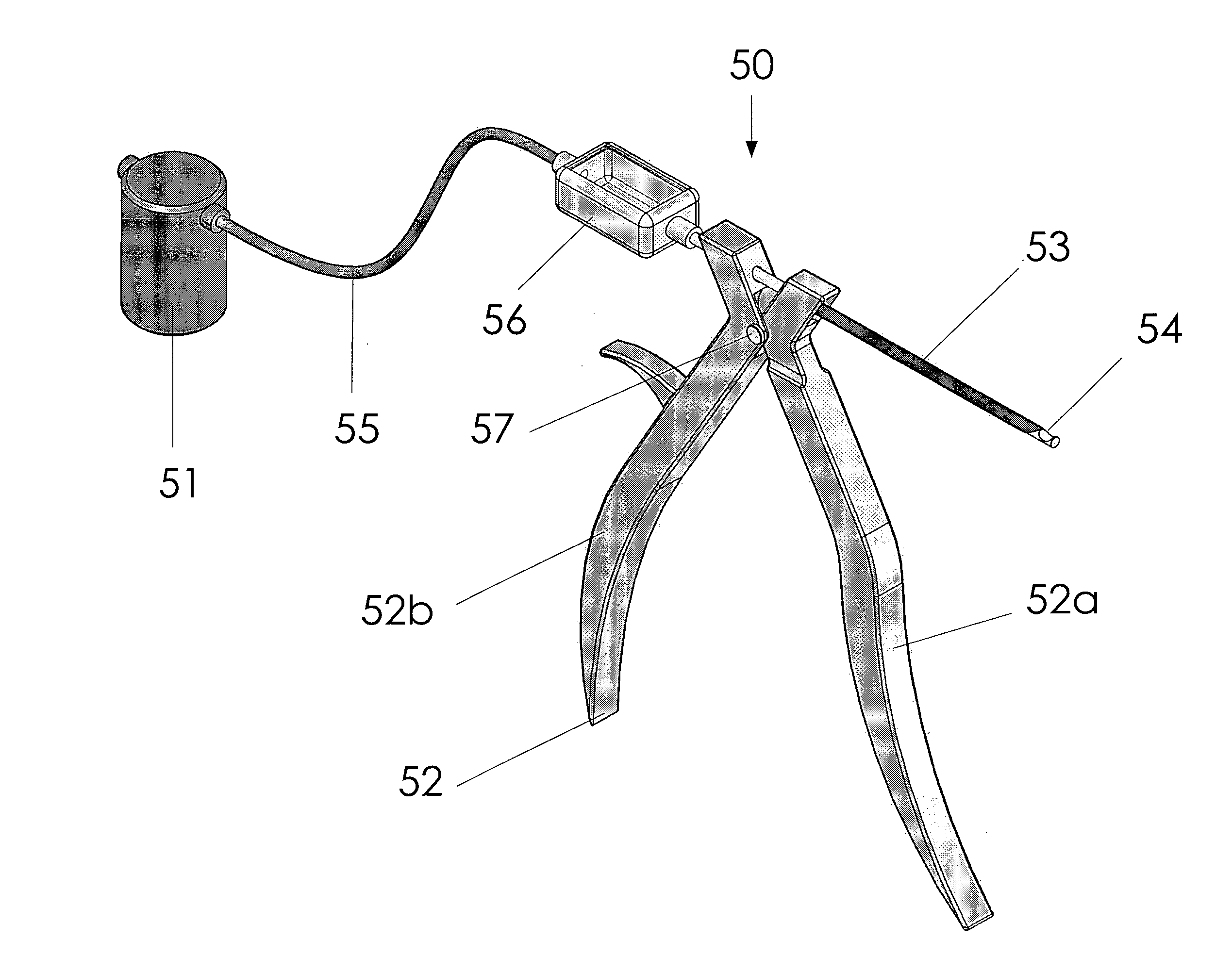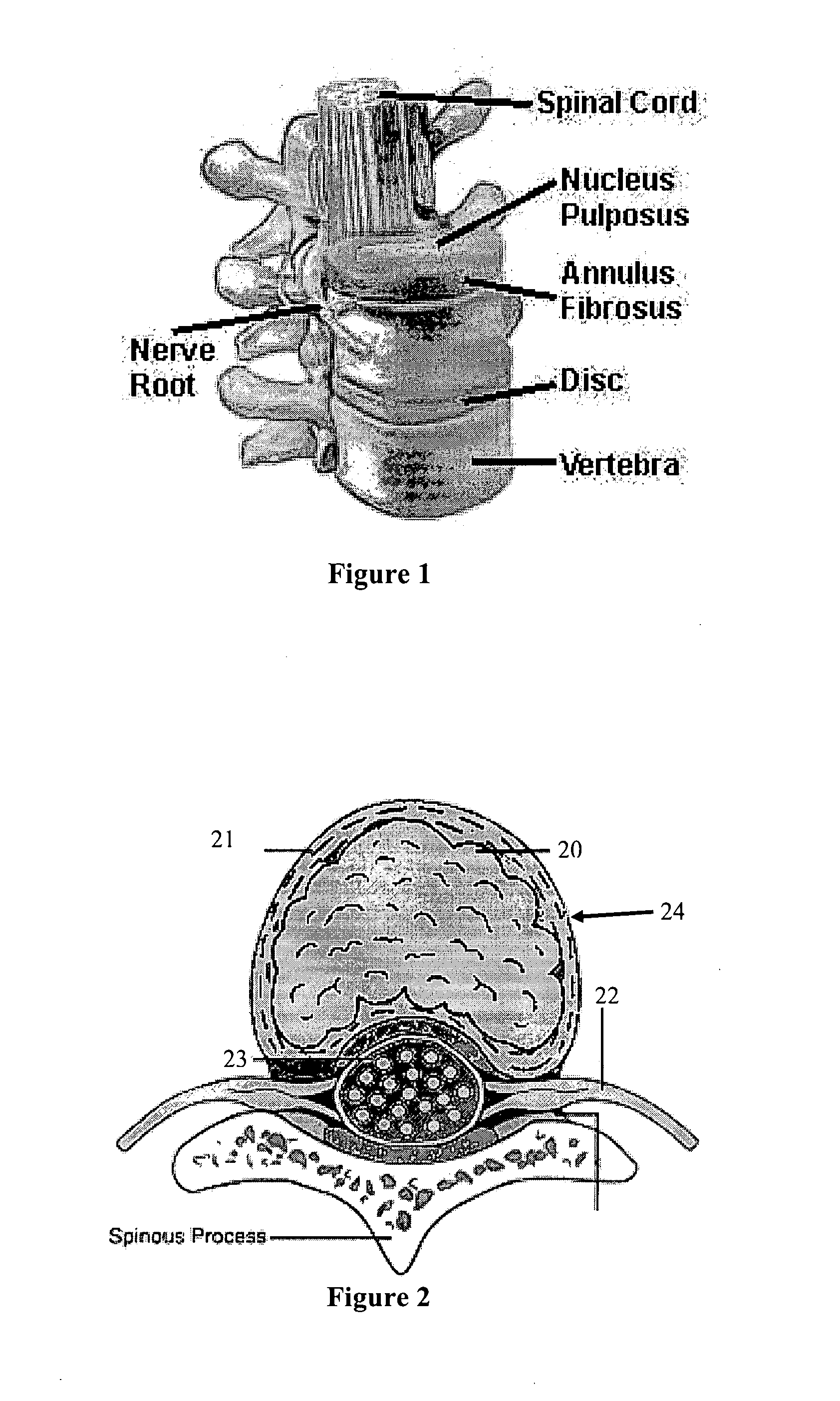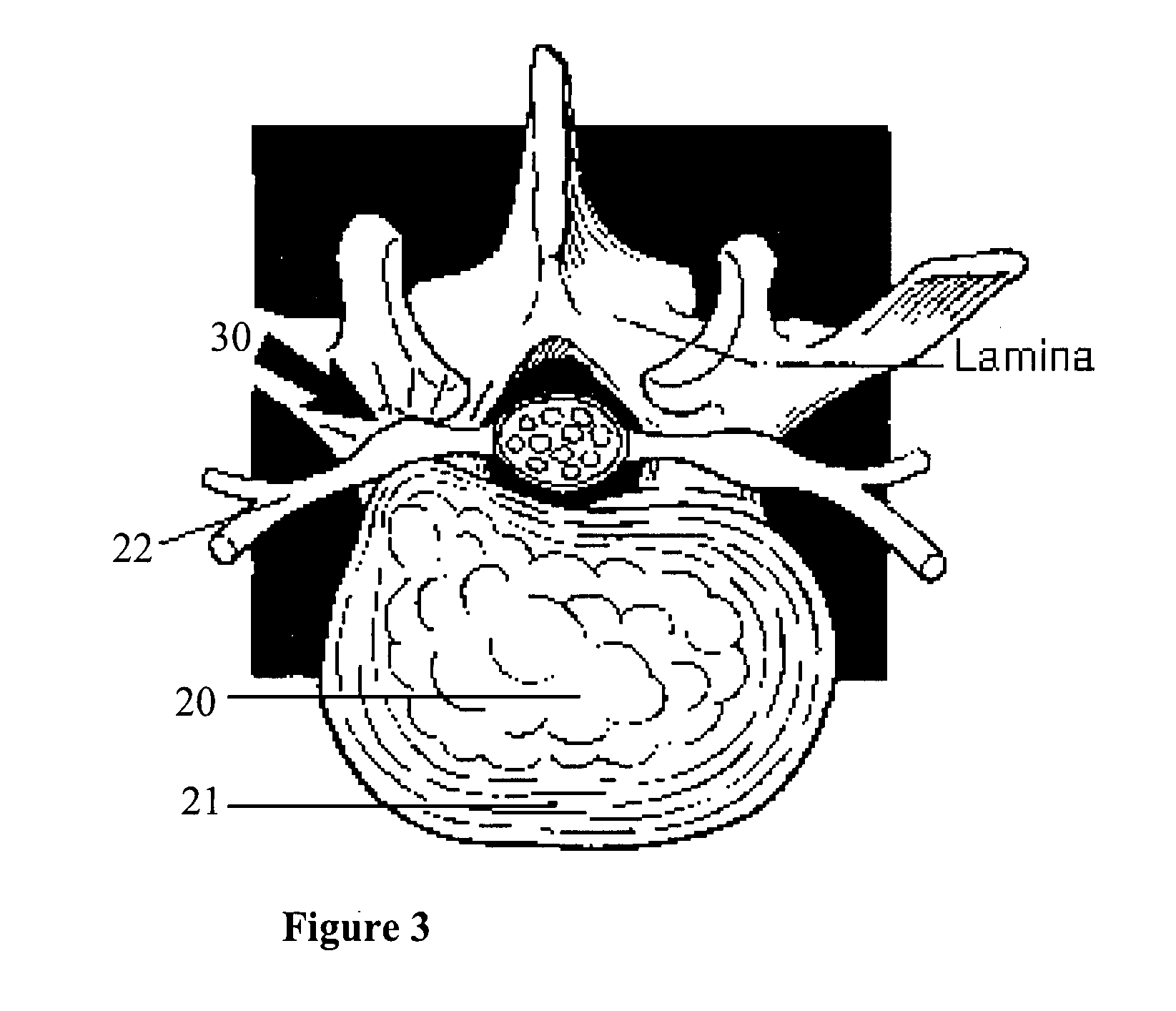Implement and method to extract nucleus from spine intervertebral disc
a technology nucleus, which is applied in the field of spine intervertebral disc extraction and nucleus extraction, can solve the problems of affecting the function of the annulus, affecting the patient's work and productivity, and affecting the patient's health, so as to reduce the risk of infection or discomfort for the patient, the effect of removing the nucleus quickly and reducing the risk of infection
- Summary
- Abstract
- Description
- Claims
- Application Information
AI Technical Summary
Benefits of technology
Problems solved by technology
Method used
Image
Examples
embodiment 100
[0062]FIG. 10 illustrates an embodiment 100 of the present invention that incorporates a loop 101 attached at an angle of approximately 90 degrees to the end of a control rod 102. The loop 101 has a major diameter substantially equal to or greater than the inner diameter of the distal collection tube 54 and opening 60. The loop 101 may protrude beyond the opening 60 in the collection tube 54 and be sufficiently hard and stiff to disrupt nucleus material 20 as it is moved longitudinally within the opening 60. Preferably, the loop 101 is also sufficiently flexible to be captured entirely within the collection tube 54 without exceeding its yield stress. With the loop 101 positioned within the collection tube a cutting tube 53 (not shown) may be deployed to completely entrain nucleus material 20 within the opening 60.
[0063] The control rod 102 is manipulated by an operator from outside the intervertebral disc 24 to move the loop 101. The control rod 102 may pass through a second lumen o...
embodiment 110
[0064]FIG. 11 shows is an alternative embodiment 110 of the invention where a solid or mesh disc 111 is attached to the end of the control rod 102. This embodiment is preferred for trapping nucleus material 20 against or within the capture tube 105.
embodiment 120
[0065] The embodiment of the present invention 120 shown in FIG. 12 comprises a plurality of control rods 122 that pass through separate lumens of the capture tube 105. Also illustrated is a loop 121 formed in a bilobed shape. One lobe of loop 121 essentially conforms to the inside diameter of the collection tube 54. The other lobe is shaped to engage more nucleus material 20 beyond the collection tube 54. Utilizing more than one control rod permits greater control of the loop 121 with less difficulty preventing unwanted rotation or bending of the loop. Functions of embodiments 110 and 100 are retained in embodiment 120.
[0066]FIG. 13a shows an embodiment of the present invention comprising a loop 131 formed on the end of a rotational control rod and located in the opening 60 of the collection tube 54. The control rod passes through a lumen of the collection tube 54 near the center line of the opening 60. Alternatively, the lumen 103 guiding the control rod may be within the wall of ...
PUM
 Login to View More
Login to View More Abstract
Description
Claims
Application Information
 Login to View More
Login to View More - R&D
- Intellectual Property
- Life Sciences
- Materials
- Tech Scout
- Unparalleled Data Quality
- Higher Quality Content
- 60% Fewer Hallucinations
Browse by: Latest US Patents, China's latest patents, Technical Efficacy Thesaurus, Application Domain, Technology Topic, Popular Technical Reports.
© 2025 PatSnap. All rights reserved.Legal|Privacy policy|Modern Slavery Act Transparency Statement|Sitemap|About US| Contact US: help@patsnap.com



